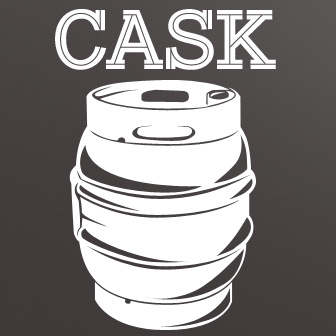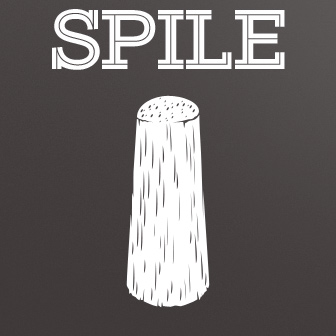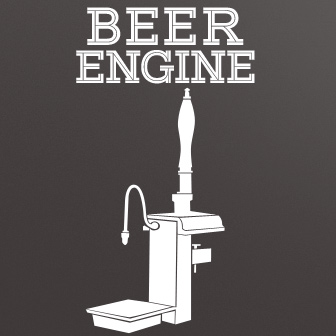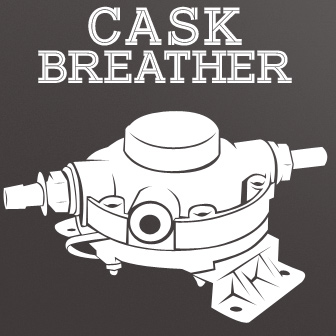November 03, 2017
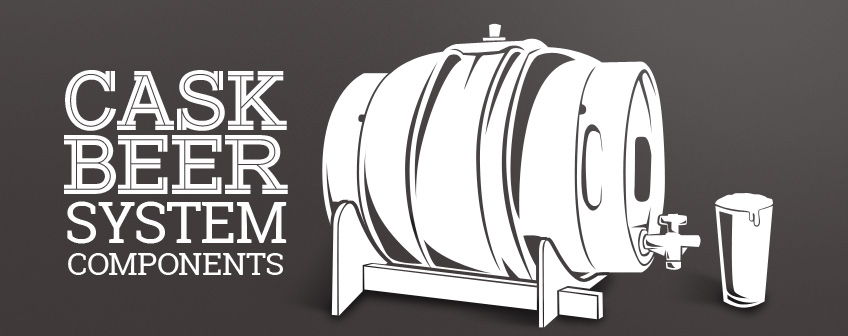
Cask-conditioned beer, also known as Real Ale, is beer that has gone through a second fermentation process, is unpasteurized and served from a cask keg with no added nitrogen or CO2. Instead, co2 builds up naturally in the cask during fermentation. Once it is fermented, it is then served straight from the cask. This gives it a distinct and incredibly fresh taste that has a much gentler level of carbonation and usually features a bit more complex flavor and aromatic profile. Cask kegs are best enjoyed over a day or two and are not intended for long term storage. They are ideal for local tastings and popular cask nights where they are expected to be emptied in one evening. In order to begin the brewing process, you will need a few different tools.
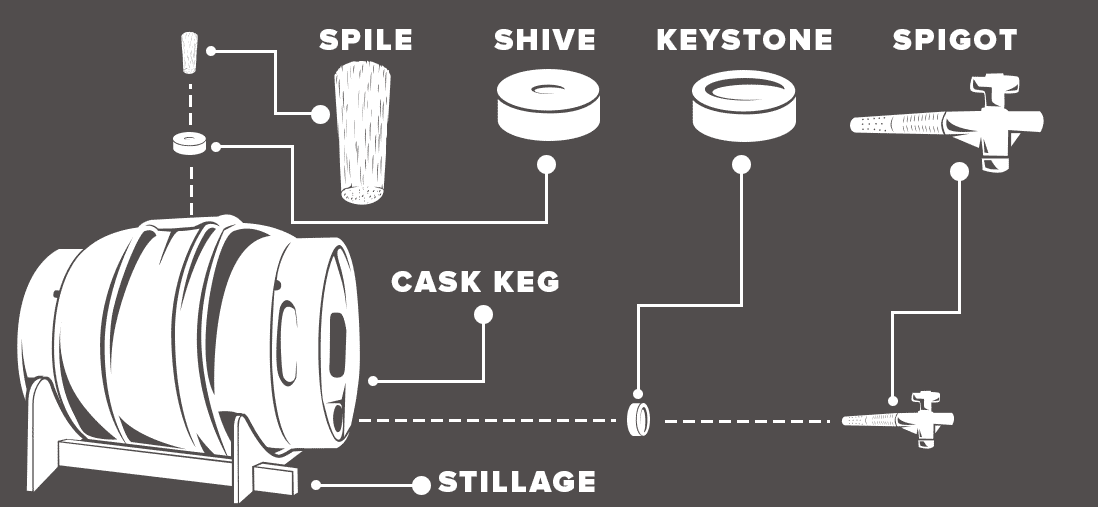
Cask
A cask, also known as a firkin (10.8 gallons) or a pin (5.4 gallons), is a traditionally barrel shaped container that stores and ferments beer. It has a 2 inch hole on the side for the shive (plug), and a one inch hole at the end for the keystone (where you tap the beer). Casks date back to the Iron Age, when the Celts developed wooden barrels with iron hoops to store goods. Over the years, this developed into a method of preserving and storing beer. A cask can be made of plastic or wood but typically it is made of stainless steel. This is the most important part of cask brewing, so if you need a cask, click here
Spile
A spile is basically a small wooden peg that is nailed into the shive to stop the keg or "air" the keg. A hard spile is inserted into the keg after the conditioning process has ended in order to maintain carbonation levels. Once the beer is tapped the soft spile replaces the hard spile. A soft spile is inserted in order to release excess CO2. This allows for equalization prior to serving. Beverage factory offers both hard and soft spiles here.
Spigot
This is the spout that is pounded into the keystone using a mallet in order to tap the beer. The beer then lets gravity take over to get the beer flowing. If you ever want to get the beer out of your cask, we have spigots available here.
Beer engine
If you want to get fancy, you can pump directly from the cask using a beer engine. This directly draws up beer from the cask through a beer line. A cask ale hand pump is normally manually operated, but can also be gas or electrically operated. They normally hide under the bar counter with the handles sticking up. Most beer engines include a sparkler. This attaches to the nozzle and acts like a showerhead. When beer pours from it, it froths the beer and gives it a nice head. Beer engines are available for purchase here.
Cask Breather
The trouble with Cask brewing is sometimes you can't finish a whole cask of beer in 2 days before it spoils. A cask breather replaces head space with CO2 at atmospheric pressure, allowing you to extend the life of your cask ale. If you don't think you can finish a whole cask of beer within 2 days, cask breathers are available with our other cask ale supplies here.
Stillage
The cask needs to stay absolutely still during the clearing process. During this process yeast and finings start sticking to the inside of the keg. If the keg is not kept absolutely still, it will dislodge this sediment from the sides of the cask and go into the beer. This clouds the beer and as every brewer knows, cask beer is not supposed to be cloudy. This is where the stillage comes in. A stillage keeps the cask keg still and is also angled to make pouring and dispensing easier. This is incredibly important in the cask keg dispensing and brewing process. If you need a stillage they are available right here.


 Single Faucet Kegerator Beer Dispensers
Single Faucet Kegerator Beer Dispensers Dual Faucet Two Tap Kegerators
Dual Faucet Two Tap Kegerators Triple Faucet Three Tap Kegerators
Triple Faucet Three Tap Kegerators Undercounter Built-In Kegerators
Undercounter Built-In Kegerators Outdoor Kegerator Beer Dispensers
Outdoor Kegerator Beer Dispensers Commercial Kegerators
Commercial Kegerators Mini Kegerators
Mini Kegerators Cold Brew & Nitro Coffee Dispenser Kegerators
Cold Brew & Nitro Coffee Dispenser Kegerators Carbonated Water Kegerators
Carbonated Water Kegerators Home Brew Kegerators
Home Brew Kegerators 15" Kegerators
15" Kegerators Kombucha Equipment
Kombucha Equipment Guinness® Dispensing Kegerators
Guinness® Dispensing Kegerators Vending Kegerators
Vending Kegerators Wine Kegerators
Wine Kegerators Kegerator Cabinets
Kegerator Cabinets Kegerator Covers and Accessories
Kegerator Covers and Accessories Kegerators
Kegerators Kegerator Conversion Kits
Kegerator Conversion Kits Kegs & Keg Accessories
Kegs & Keg Accessories Beer Faucets
Beer Faucets Beer Shanks
Beer Shanks Draft Beer Towers
Draft Beer Towers Keg Taps Couplers
Keg Taps Couplers Regulators & Gas Equipment
Regulators & Gas Equipment Beer & Gas Line Hose
Beer & Gas Line Hose Co2 and Nitrogen Air Tanks
Co2 and Nitrogen Air Tanks Beer Line Cleaning Equipment
Beer Line Cleaning Equipment Drip Trays
Drip Trays System Fittings
System Fittings Jockey Boxes
Jockey Boxes Keg Beer Party Pumps
Keg Beer Party Pumps Glassware & Accessories
Glassware & Accessories Guinness® Dispensing Equipment
Guinness® Dispensing Equipment Remote Glycol Systems
Remote Glycol Systems Wine Cooler Refrigerators
Wine Cooler Refrigerators Wine Cellar Cabinets
Wine Cellar Cabinets Wine Racks
Wine Racks Cooling Units
Cooling Units Wine Dispensing Systems
Wine Dispensing Systems Wine Glasses
Wine Glasses Wine Accessories
Wine Accessories Howard Miller Wine & Spirits Furniture
Howard Miller Wine & Spirits Furniture Wine Making
Wine Making Nitro Hot Draft System
Nitro Hot Draft System Ready to Drink Bag-in-a-Box Coffee Dispensing Equipment
Ready to Drink Bag-in-a-Box Coffee Dispensing Equipment Nitrogen Infusers
Nitrogen Infusers Nitrogen Tanks & Generators
Nitrogen Tanks & Generators Nitrogen Beer Regulators
Nitrogen Beer Regulators Nitro Cold Brew Coffee Kegs
Nitro Cold Brew Coffee Kegs Cold Brewed Coffee Tools
Cold Brewed Coffee Tools Espresso Machines
Espresso Machines Cleaning Equipment
Cleaning Equipment Outdoor Appliances
Outdoor Appliances ADA Appliances
ADA Appliances Panel Ready Appliances
Panel Ready Appliances Commercial Grade Appliances
Commercial Grade Appliances Beverage Centers
Beverage Centers Refrigerators
Refrigerators Drawer Refrigerators
Drawer Refrigerators Ice Makers
Ice Makers Water Dispensers & Accessories
Water Dispensers & Accessories Freezers
Freezers Home Brew Equipment Kits
Home Brew Equipment Kits Fermentation Equipment
Fermentation Equipment Boiling and Mashing Equipment
Boiling and Mashing Equipment Home Brew Beer Kegs
Home Brew Beer Kegs Home Brew Kegerator Conversion Kits
Home Brew Kegerator Conversion Kits Brewing Tools
Brewing Tools Home Brew Ingredients
Home Brew Ingredients Cleaning Chemicals
Cleaning Chemicals Test Equipment
Test Equipment Home Brew Beer Bottles and Bottling Equipment
Home Brew Beer Bottles and Bottling Equipment Brewery Fittings
Brewery Fittings Draft Beer Equipment
Draft Beer Equipment Homebrewing Equipment
Homebrewing Equipment Wine Equipment
Wine Equipment Luxury Appliances and Refrigeration
Luxury Appliances and Refrigeration Coffee Equipment
Coffee Equipment Home Bar & Barware
Home Bar & Barware Kombucha
Kombucha The Beverage Blog
The Beverage Blog Frequently Asked Beer Questions
Frequently Asked Beer Questions Shop by Brand
Shop by Brand Shop by Category
Shop by Category




